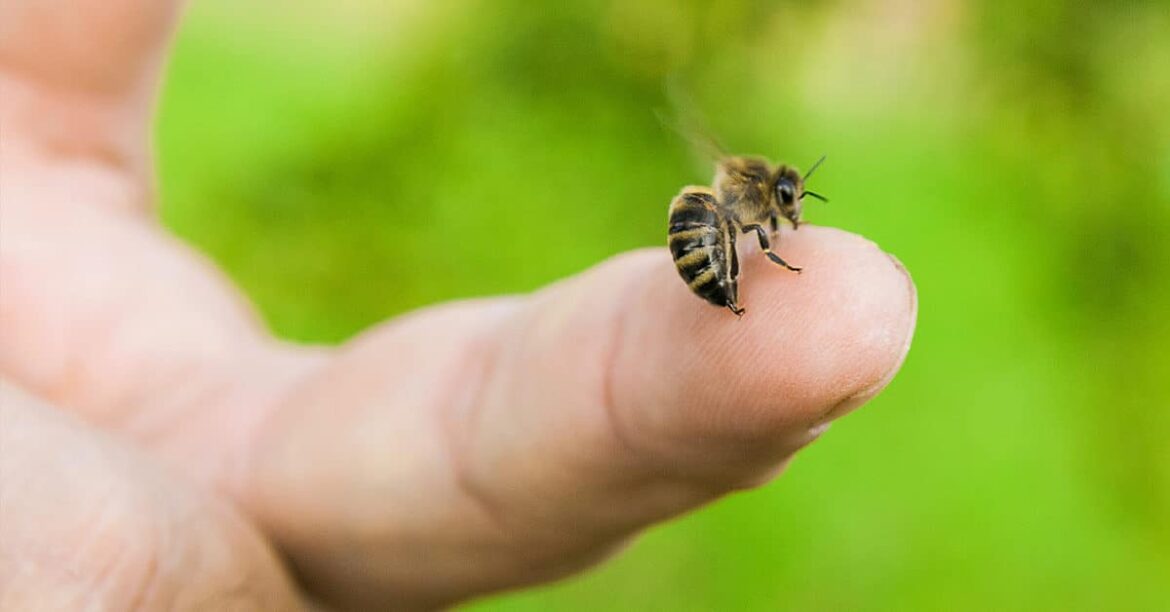1.4K
There are several effective first aid methods after a bee sting. It is important to stay calm and take care of reactions to the sting immediately. We give you tips on how you can treat the symptoms of a bee sting yourself.
First aid for a bee sting
A bee or wasp sting can happen again and again in the summertime. Therefore, it is important to know how to react quickly and effectively to any symptoms that may occur.
- You can usually recognise a bee sting by the stinger still present in the puncture site. After a sting, a bee loses its rear end and dies because it cannot pull the stinger out again in humans.
- However, a bee also leaves all of its venom on the stung person, which usually causes stronger reactions than a wasp sting. Wasps, on the other hand, can sting several times, so they portion out their venom accordingly.
- If there is still a bee stinger in the sting site, remove it with a blunt object or flick it off with your fingers. If you use tweezers or grab it with your fingernails, there is a risk that the pressure exerted will cause more venom from the stinger to enter the sting site.
- Cool the sting immediately and, if possible, elevate the affected part of the body to avoid severe swelling.
- A cut open onion has often proved very helpful for insect bites. Simply place the onion half on the puncture site so that the essential oils can soothe the skin and relieve pain and itching.
- If present, you can aspirate some of the venom with a disposable syringe. To do this, place the plastic syringe on the sting and pull it open so that the venom can drain out of the sting.
- Applying or taking an antihistamine is also recommended for bee stings, as it can quickly relieve the symptoms and prevent a severe reaction.
- An electronic sting healer can also provide quick relief from an insect sting.
- As a rule, even major swelling and pain are no cause for concern at first. The reaction to a bee sting can be more severe than to a wasp sting.
- However, if you experience any other symptoms besides redness, swelling and itching at the sting site, you should seek medical attention immediately. Reactions such as a rash all over the body, nausea, rapid heartbeat or shortness of breath can lead to anaphylactic shock.
- If you have a known allergy to bee stings, always dial the emergency number (112) immediately and take any emergency medication immediately.
Allergic reaction to a bee sting: here’s what to do
As a rule, an insect sting is not an acute emergency. However, some people can have an allergic reaction to a sting.
